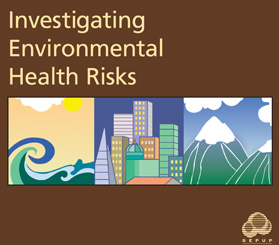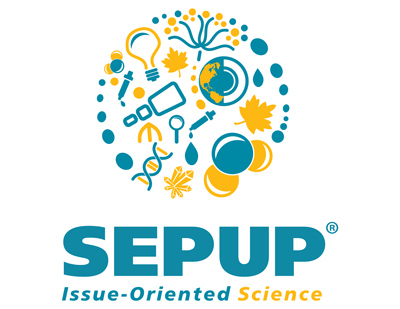Investigating Environmental Health Risks

This module focuses on environmental health risk concepts such as sampling, testing for contaminants, parts per million, and acute vs. chronic toxicity. Students explore risks associated with everyday activities and those associated with the environment, such as the clean up of Superfund (toxic waste) sites. They test black-eyed peas for simulated pesticide residue and model how substances are tested for acute and chronic toxicity. Students then read about and evaluate evidence related to two environmental health risks. Students are assessed on their ability to use evidence and identify trade-offs when making a decision.
Each module includes a Teacher’s Guide containing reproducible student pages and a kit containing the equipment required to conduct the activities with five classes of 32 students. The Teacher’s Guide provides specific strategies to facilitate and assess student learning.
Overview
Shown below is the table of contents for the teacher’s guide, which contains reproducible student pages.
Introduction
Module at a Glance
Guide to the Module
Activity 1: Identifying Risk
Student Investigation: Comparing Risks
Activity 2: Sampling
Student Investigation: One Fish, Two Fish
Activity 3: Environmental Health Risks
Student Investigation: Superfund Sites
Activity 4: Parts per Million
Student Investigation: Disappearing Dye
Activity 5: Acute Toxicity
Student Investigation: Effects of One Exposure
Activity 6: Chronic Toxicity
Student Investigation: Long-Term Exposure
Activity 7: Testing for Pesticide Residues
Student Investigation: Is It Contaminated?
Activity 8: Evaluating Risk
Student Investigation: What Can We Do?
Appendix A: Materials
Appendix B: Background
Appendix C: Assessment
Appendix D: Glossary

